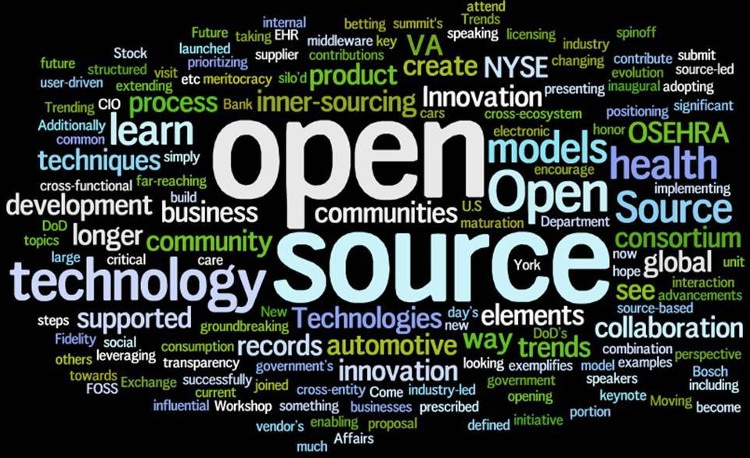
The most important transformations in the enterprise IT space — cloud, SDI, digitisation and DevOps — will be driven by open source.
A few years ago, open source was the less-glamourous and low-cost alternative in the enterprise world, and no one would have taken the trouble to predict what its future could look like. Fast-forward to 2016, many of us will be amazed by how open source has become the de facto standard for nearly everything inside an enterprise. Open source today is the primary engine for innovation and business transformation. Cost is probably the last reason for an organisation to go in for open source.
An exclusive market study conducted by North Bridge and Black Duck brought some fascinating statistics a few months ago. In the study titled “Future of Open Source”, about 90 percent of surveyed organisations said that open source improves efficiency, interoperability and innovation. What is even more significant is the finding that the adoption of open source for production environments outpaced the proprietary software for the first time — more than 55 percent leverage OSS for production infrastructure.
Closer home, Indian enterprises are equally enthusiastic and serious about adopting open source across the board. It is gradually becoming the most preferred platform for their business-critical applications, cloud infrastructures, software-defined architectures and is at the heart of digital transformation.
In 2017, we believe that open source will attain a further elevated stature within the enterprise; here are the reasons.
OpenStack will rule the cloud world
OpenStack has already made its presence felt as an enterprise-class framework for the cloud. An independent study, commissioned by SUSE, reveals that 81 percent of senior IT professionals are planning to move or are already moving to OpenStack Private Cloud. What is more, the most innovative businesses and many Fortune 100 businesses have already adopted OpenStack for their production environment.
As cloud becomes the foundation on which your future business will be run, OpenStack gains the upper hand with its flexibility, agility, performance and efficiency. Significant cost reduction is another major consideration for organisations, especially the large enterprises. Because a proprietary cloud platform is excessively expensive to build and maintain.
At the same time, an OpenStack-based architecture supports the kind of innovations that enterprises are striving to achieve, as it offers self-service developer access. OpenStack will support a much larger transformation toward agility and developmental efficiency and is not tied to virtualisation or consolidation efforts, states a recent Forrester report. What kind of cloud you own is going to have an all-encompassing impact on a whole lot of business initiatives and transformations you undertake in 2017.
Open source to be at the core of digital transformation
Digital transformation is, in fact, one of the biggest headaches for CIOs because of its sheer heterogeneous and all-pervading nature. With the data at the center of digital transformation, it is often impossible for CIOs to ensure that the information that percolates down is insightful and secure at the same time. They need a platform which is scalable, flexible, allows innovations and is quick enough to turn around. This is exactly what Open Source promises. Not just that, with the current heterogeneous environments that exist in enterprises, interoperability is going to be the most critical factor. The days of vendor lock-in are truly over as we contain digitisation.
Technologies like Internet of Things (IoT) and SMAC (social, mobile, analytics and cloud) will make data more valuable and voluminous. The diversity of devices and standards that will emerge will make open source a great fit for enterprises to truly leverage these trends. In fact, we will be surprised to know that almost all ‘digital enterprises’ in the world are already using open source platforms and tools to a great extent. The pace of innovation that open source communities can bring to the table is unprecedented.
Open source-defined data centers
A recent research paper from IDC states that 85 percent of the surveyed enterprises globally consider open source to be the realistic or preferred solution for migrating to software-defined infrastructure (SDI). IDC also recommends to avoiding vendor lock-in by deploying open source solutions. Interestingly, many organisations seem to have already understood the benefits of open source clearly, with Linux adoption in the data centers growing steadily at a pace of 15-20 percent YoY.
The key drivers of SDI — efficiency, scalability and reliability at minimal investment — can be achieved only with the adoption of open source platforms. Open source helps the enterprises to be agiler in building, deploying and maintaining applications. In the coming days, open source adoption is going to be essential for achieving true ‘zero-downtime’ in Software-Defined-Infrastructure.
We believe that open source will have specifically large role to play in the software-defined-storage (SDS) space. It will help organisations in overcoming the current challenges associated with SDS. Open SDS solutions can scale infinitely without a need to refresh the entire platform or disrupt the existing functioning environment.
Open source to be decisive in enterprise DevOps journey
Today, software and applications have a direct impact on business success and performance. As a reason, development, testing, delivery, and maintenance of applications have become very crucial. In the customer-driven economy, it is imperative for organisations to have DevOps and containerisation technologies to increase release cycles and quality of applications.
Often, enterprises struggle to get the most out of DevOps model. The investment associated with replicating the production environments for testing the apps is not negligible. They also fail to ensure that the existing systems are not disturbed while running a testing environment within containers.
Industry analysts believe that microservices running in Docker-like containers, on an open and scalable cloud infrastructure are the future of applications. OpenStack-based cloud infrastructures are going to be an absolute necessity for enterprises for a successful DevOp journey. The flexibility and interoperability apart, the open cloud allows the DevOps team to reuse the same infrastructure as and when containers are created.
This year, we will see open source becoming the first preference for organisations that are at the forefront of innovation.











































































